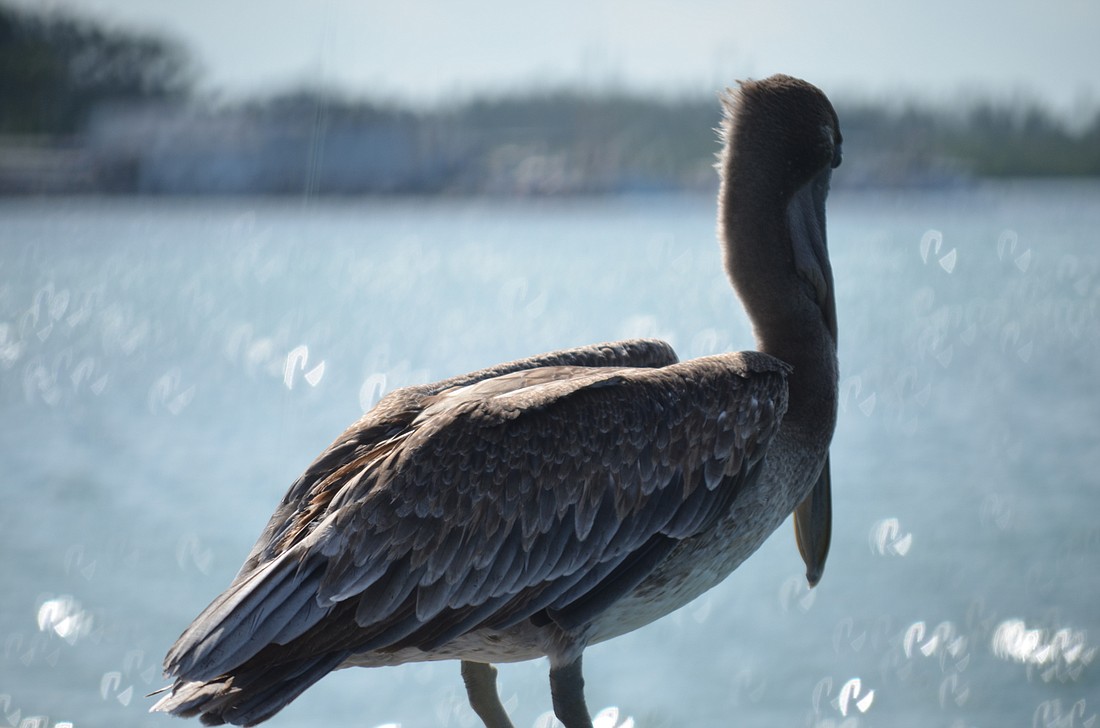- April 28, 2024
-
-
Loading

Loading

APRIL FOOLS -- Marine life in and around Sarasota Bay has been living the good life since the June 2020 break of a town sewage line in Manatee County, according to a follow-up environmental report prepared by a pioneering think tank in the study of affluent effluent.
Sea trout, snook, manatee, dolphin, otters, and a variety of shore birds show signs of better health and vitality since millions of gallons of raw sewage leaked from an underground pipe break more than a football field away from the mainland shore of Sarasota Bay, according an executive summary of a study by Environmental Watchdog-Potentially Odiferous Overflow Problems (EW-POOP), obtained exclusively by the Longboat Observer.
“There have been several events of affluentes effluxu (affluent effluent) spills in the last 10 years – Palm Beach, the Hamptons, along the coast of Westchester County in New York – and we’ve seen similar results,’’ said Hayes T. Conclusions, principal investigator for EW-POOP. “They’re all regionally different, but the trend always is the same. As is the case here, there is little harm done by the direct effects of sewage. That's not even in question. But, rather, the local environment often benefits from the dining choices made by clients of the sewage system in question.’’
EW-POOP in 2017 did the first work on studying the effects of what experts call AE Syndrome, in which the half-lives of harmful contaminants work their way out of the environment in short order. Conversely, high levels of such consumables as French wine, rich sauces, meats, cheeses, breakfast foods and 20-year old Scotch are detectable months later.
Concentrations of harmful nutrients in the parts-per-million range can wreak havoc on an ecosystem, but Conclusions' conclusions find that similar concentrations of low-carbohydrate, high-fiber and high protein foods and drinks introduced into the habitats of coastal wildlife perk up animal activity and generally improves the size, lean muscle weight, and mental disposition of animals that encounter it.
Earlier studies of the sewage effect indeed tracks with EW-POOP’s findings – no lasting damage was seen to the bay and its wetlands. The positive effects, though, have been already noted outside the realm of science.
“I haven’t seen a snook this big since the ‘50s,’’ said local fishing guide Gray Templeton. “Something sure has changed. Manatee are smiling again.’’
Levels of Merlot wine were found to be among the highest recorded in the natural world, something Conclusions attributes to the COVID-19 lockdown. Likewise, benchmark levels of plain yogurt and steel-cut oats were second only to samples taken in 2018 following a windstorm at an outdoor Dave Matthews Band concert in White Plains, N.Y. in which 27 portable restrooms overturned.
EW-POOP's peer-reviewed findings are set to be published in the fall in the Italian science journal "Luto Absque Paleis," which rose to national prominence in 2019 following its controversial report establishing a direct connection between self-tanning creams and Lamborghini ownership.
“Again, it’s often a regional thing, but I think we can firmly say without equivocation, probably, that Longboat people are doing it right,’’ Conclusions said. “Well, the residents anyway. Without that sewage break, we’d have never known where the town sits in comparison to other locations.’’